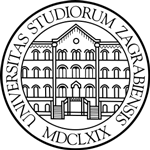Magenta and alternative red colour spectroscopy on nautical charts in the visible and near-infrared electromagnetic spectrum
Abstract
The International Hydrographic Organization (IHO) publishes Regulations and Technical specifications for the official nautical charts in order to standardize the use of colours to all hydrographic offices of IHO Member States. The use of magenta is reserved for highlighting, drawing attention and to distinguish information to elements of a chart of maritime importance and it is necessary to ensure its visibility.So far, there is no information on the spectrographic composition of colours intended to highlight specific content. For the first time, spectroscopy of magenta and alternative red colour is performed on the charts of hydrographic offices that have officially published colour compositions. Spectroscopy extends beyond the visible area to the near-infrared part of the electromagnetic spectrum. The article presents the absorption curves of magenta and red colour that contain information on the spectrographic composition of these colours in the visible and near-infrared spectrum. The purpose of the study is to show what proportion of black colour added to magenta or red can give positive response or positive absorption properties in the near-infrared part of the spectrum. The results are also part of preparatory research aimed at introducing colour twins, a system of hidden graphical elements designed to protect nautical charts from forgery and to expand their information content.

This work is licensed under a Creative Commons Attribution-NonCommercial-NoDerivatives 4.0 International License.






